The Jewish Quarter in Jerusalem is one of the four quarters in the Old City; next to the Muslim Quarter; the Christian Quarter, and the Armenian Quarter. Its name has been accepted since the 19th century. Furthermore, the district is home to about 4,200 residents; most of whom are religious Jews; and it includes residences, Jewish religious buildings; archeological and tourist sites; souvenir and Judaica shops, and restaurants.
Best Tours in Jerusalem
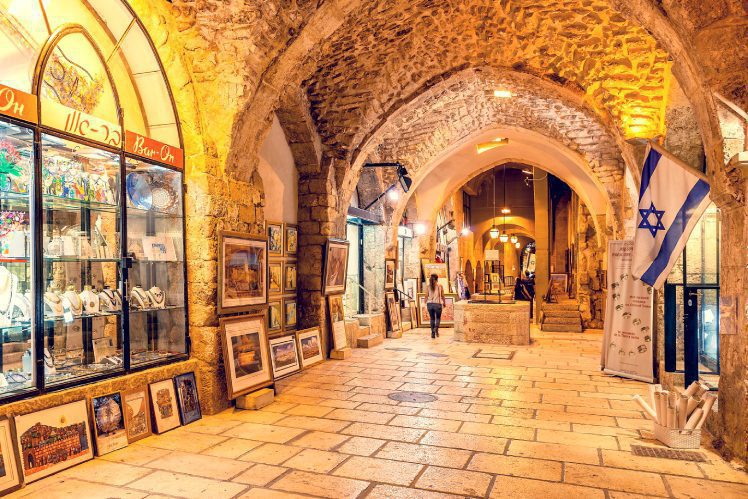
The Jewish Quarter: Archaeological Excavations
So the Jewish Quarter was thoroughly excavated in the 1970s and 1980s, and the findings indicate extensive activity in the area over the generations. In fact, the earliest finds are from the days of the First Temple; and they include the broad wall; the Israeli tower, as well as cutlery and figurines on display in the Herodian Quarter.
Moreover, the findings show that in the late First Temple period, about 2,500 years ago, this area was within the confines of the fortified city and its Jewish inhabitants engaged in foreign worship. In the days of the Second Temple; the place was called ‘the upper city of Jerusalem’ and its inhabitants were wealthy priests; who enjoyed a high status.
So in the Byzantine period; the area was bustling with religious and public activity; as evidenced by the massive Nea Church, whose remains are under the Jewish Quarter. Another find from the period is the Roman-Byzantine Cardo; paved to allow direct and convenient passage from the churches north of the city. From the early Muslim period, no unusual finds remain. Still, during the Crusader period, German members of the Teutonic Order built within the boundaries of the present-day Jewish Quarter two Crusader churches, and the Armenians established a monastery.
The Broad Wall
A section of a fortification dating to the days of King Hezekiah; which testifies to the northern border of Jerusalem in the days of the First Temple. The special width of the wall – seven meters – is what gave it its name already in the mouth of Nehemiah about 2,500 years ago; who probably saw its remains on his return from Babylon (Book of Nehemiah, 3:8). In fact, the importance of the wall is that it was the first conclusive proof that Jerusalem had expanded to the Western Hill as early as the days of the First Temple.
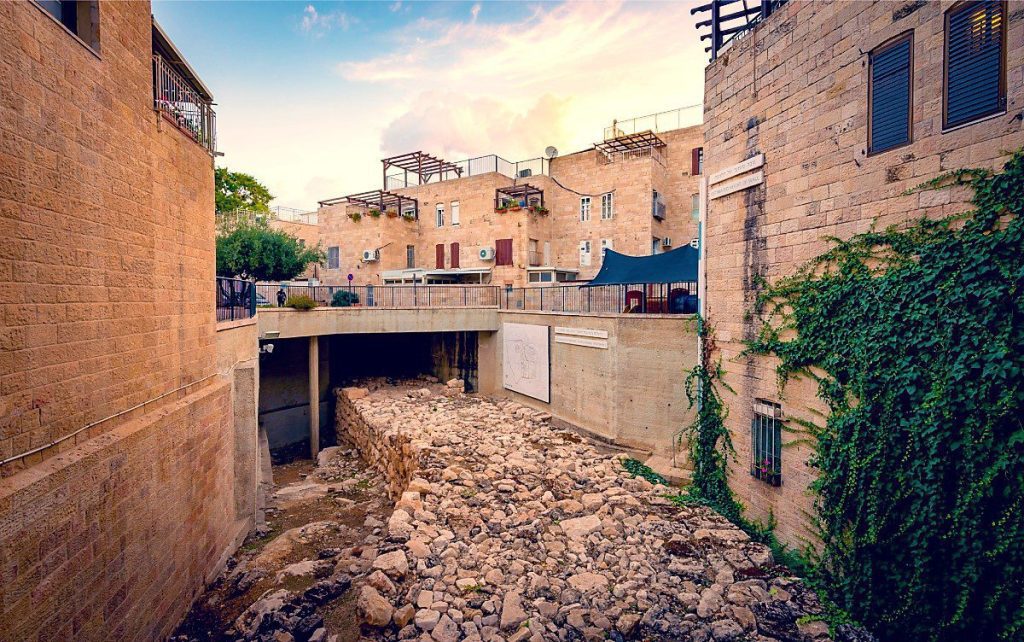
Jewish Quarter in Jerusalem: The Israeli Tower
So the Israeli Tower fortification is from the days of the First Temple; which was probably connected to the wide wall, which lies next to it. The tower was built of fieldstones and was probably part of a gate. It burned down with the destruction of Jerusalem and the first temple in 586 BCE and its foundations still show the ashes and arrowheads indicating the battles.
The Davidson Archaeological Park
A complex of about twenty dunams presents finds from the history of Jerusalem at their site. So most of the finds are from the Second Temple period and include a cobbled street adjacent to the Western Wall; remains from Robinson’s Arch, mikvahs, and inscriptions. Other finds in the archeological garden include a residential neighborhood from the Byzantine period; palaces from the early Muslim period, and more.
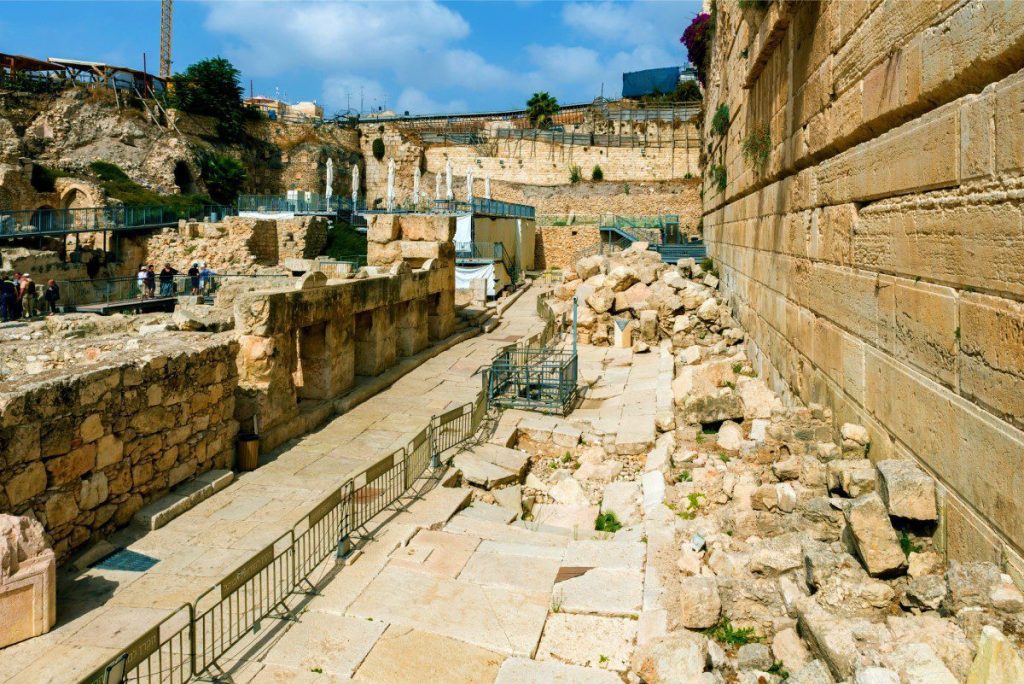
The Western Wall Tunnels
An underground compound, which traces the continuation of the Western Wall along about 400 meters; to the northwest corner of the Temple Mount. Furthermore, the site includes tunnels, water canals, buildings, and cisterns that have been covered over the years, and above them, the Muslim Quarter was built.
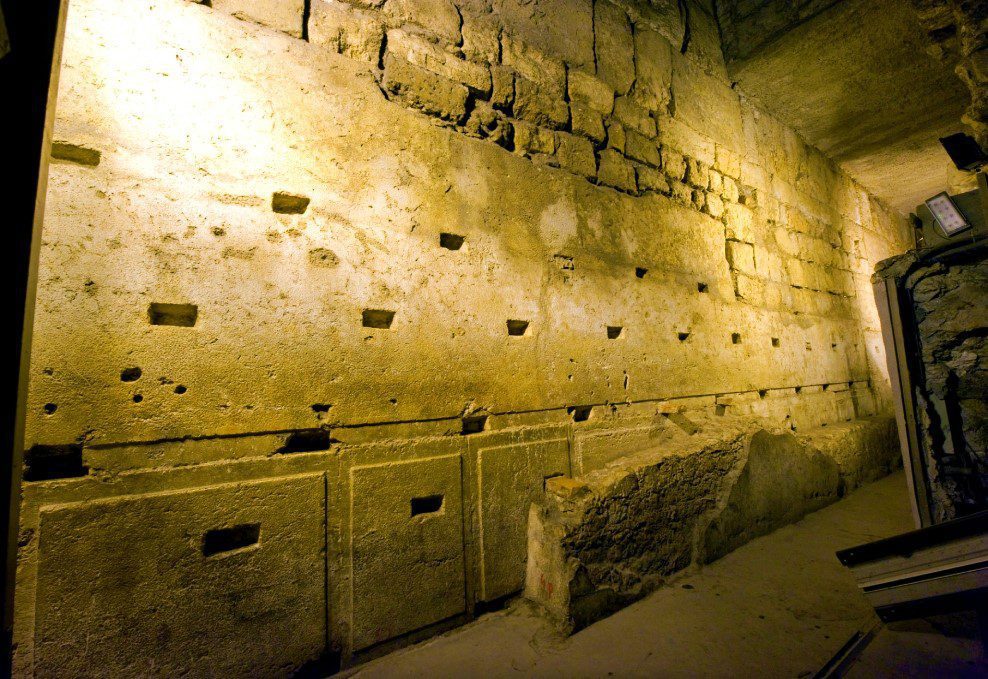
The Burnt House
A house from the end of the Second Temple period, which was destroyed with Jerusalem and the Temple in the Great Revolt of 70 CE. In fact, the house is rich in mikvahs; cisterns, and many stone vessels; which testify that the occupants of the house observed the laws of purity properly for the priests. An important find in the burnt house that indicates the events of the destruction is the remains of the arm of a woman holding a bayonet; who apparently perished in the fire.
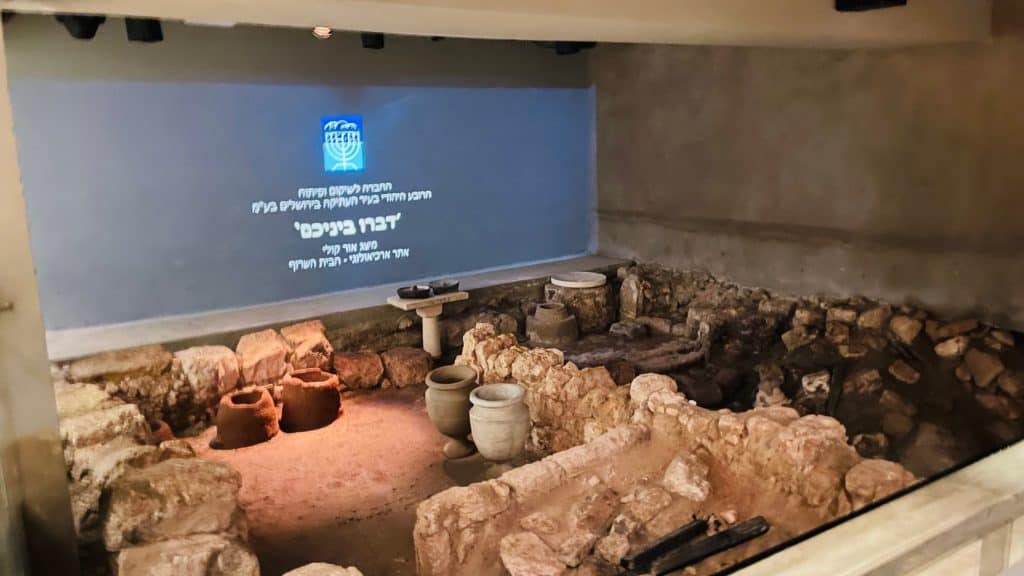
The Herodian Quarter
An archeological site showing a Jewish luxury neighborhood, where priests lived during the reign of King Herod. So the site is rich in mosaic floors; mikvahs; and finds of tools and household items from the First Temple period, and especially from the Second Temple period. The findings testify to the great wealth of the priests in the days of the Second Temple, which is consistent with what is quoted in the writings of Sages about the abomination of the priesthood at the end of the Temple period, and the social disconnect that eventually led to destruction.
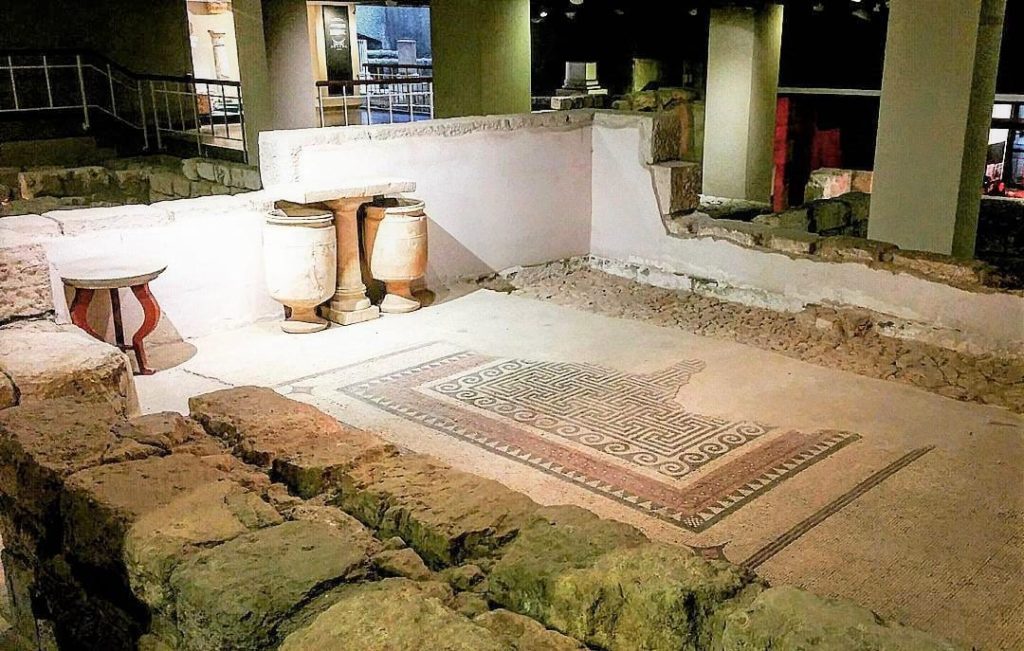
The Nea Church
Remains of a huge Byzantine church; built by Emperor Justinian I in the sixth century CE. The church was dedicated to Mary, the mother of Jesus; and its full name is “The New Church named after Mary the mother of Jesus” (New Greek – Nea). Moreover, the remains of the church are buried under a square of shelters; and parts of them can be seen; protruding under the wall of the Old City; in the basements of the nearby school; and in the Garden of Resurrection.
The Cardo
A very wide cobbled street, which was used as a merchant market in the Roman and Byzantine periods. Now it is partially restored and houses some typical tourist shops offering Judaicas.
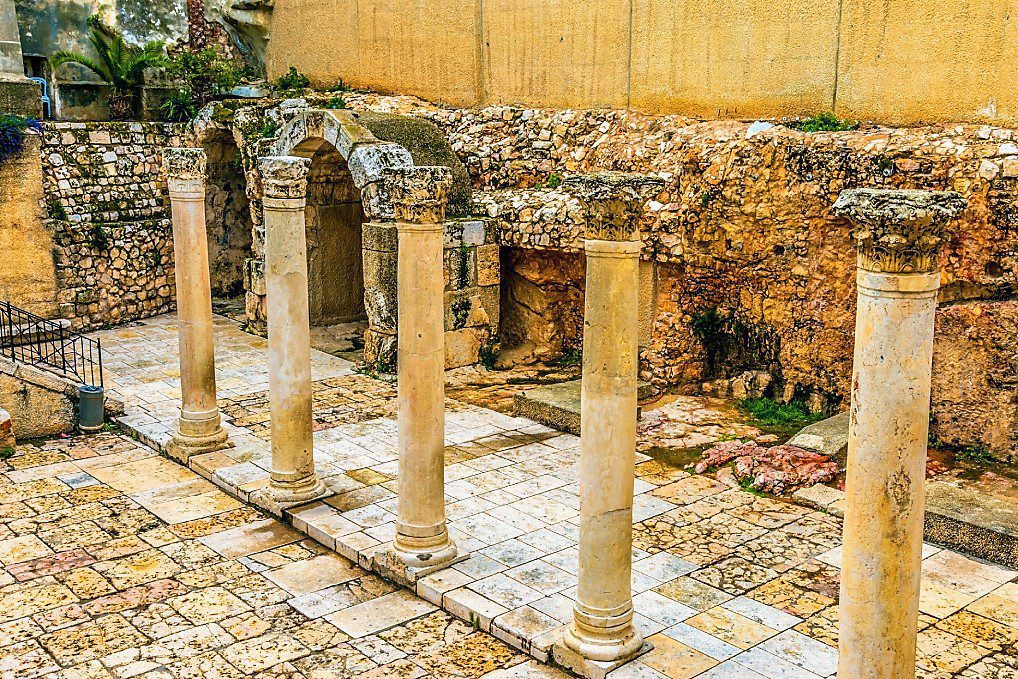
Church of the Mary of the Germans
A large, impressively preserved complex; including a church; monastery, and guest house; was built during the Crusader period by the Teutonic German Order. The church is one of two German churches within the Jewish Quarter. But the other church has not been preserved.
Shelter Square
A renovated plaza that preserves the location of the last residential complex built in the Jewish Quarter in the 19th century. From the original houses, a block of flats with domes has been preserved; which is now used by the local school, as well as the ‘Rothschild House’ which was built in the heart of the residential courtyard and serves as a Torah study for boys. Moreover, the plaza shows the remains of pillars erected by the Nea Church, buried under the courtyard.
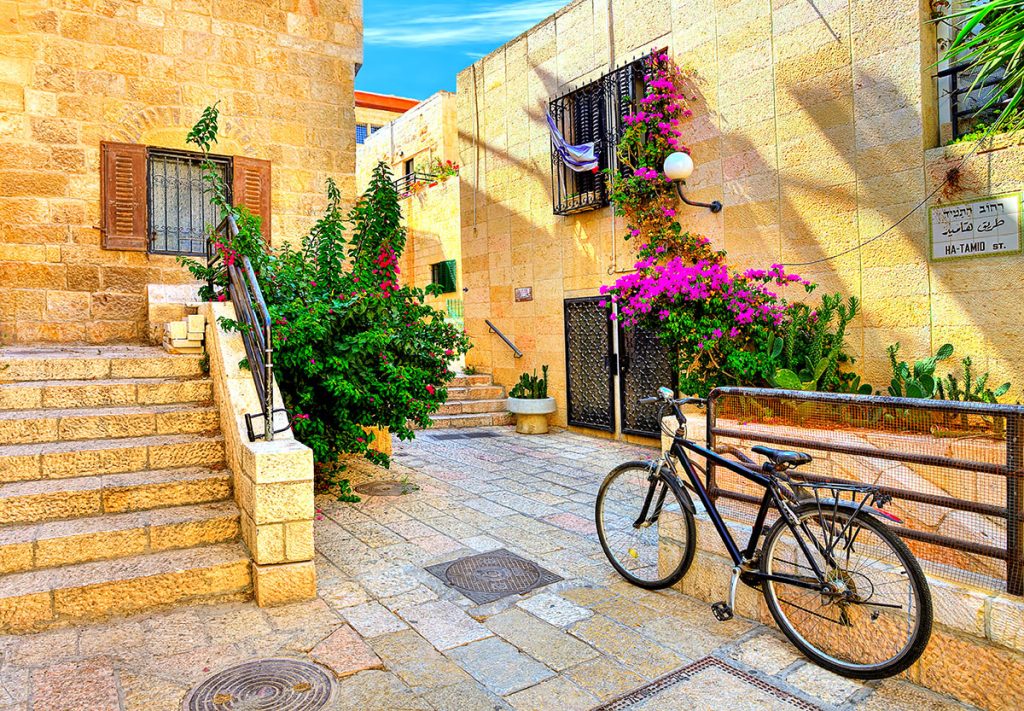
Religious Sites In the Jewish Quarter
The Western Wall
The Wall is considered the holiest site for Judaism after the Temple Mount, as the Western Wall was closest to the Holy of Holies of the Temple among its other walls. Also, the continuation of the Western Wall can be seen in the Western Wall tunnels.
The Hurva Synagogue
So this is my favorite synagogue to take my guests! The temple underwent many incarnations, beginning with its establishment in the early 18th century by the community of Rabbi Yehuda the Chassid; for its destruction some twenty years later; its re-establishment, and its explosion during the War of Independence in 1958. A year began the restoration of the building according to its format from the 19th century, Its construction was completed in 2010, and it was inaugurated and opened to the public.
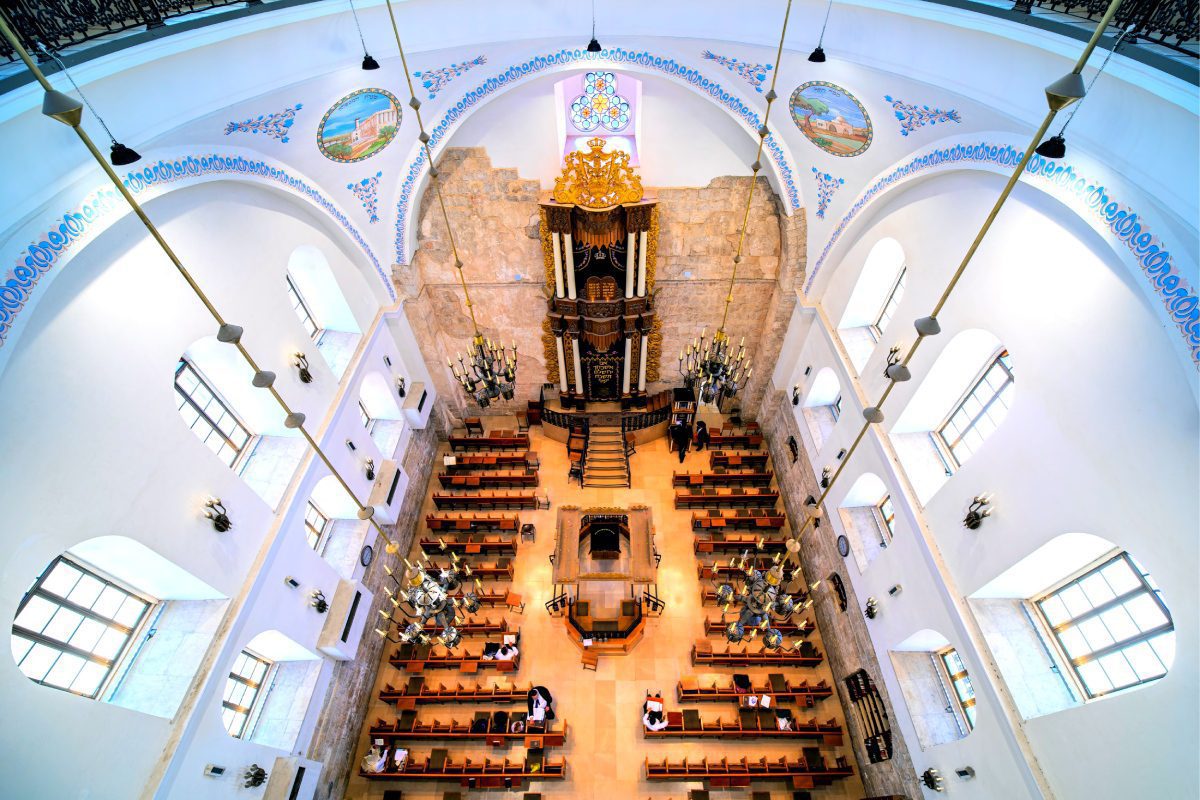
Tiferet Yisrael Synagogue
Remains of a Hasidic synagogue that was one of the tallest in the Jewish Quarter, and was destroyed during the battles of the War of Independence. The building was not included in the quarter’s rehabilitation plan after the Six-Day War; leaving the remains of walls reinforced with concrete; which rise to a height of two stories. Following the restoration of the Hurva Synagogue, the restoration process of this synagogue began in 2014.
The Ramban Synagogue
This is the oldest synagogue in the Jewish Quarter, dating to the middle of the 15th century, and serves as an Ashkenazi synagogue—exactly 700 years since the Ramban visited Jerusalem in 1267.
Sidna Omar Mosque
First, it is worth mentioning the mosque is inactive. It dates to the 15th century and was probably built in response to the nearby Ramban Synagogue. Also, the mosque features a Mamluk spire and rises two stories high.
The Karaite Synagogue
In fact, it is the only synagogue in the Jewish Quarter; belonging to the Karaite community. The building is sunk to a depth of about two meters, which indicates its construction in an earlier period; when the ground was lower, probably in the 15th century, with the transition of the Jewish settlement to this area.







